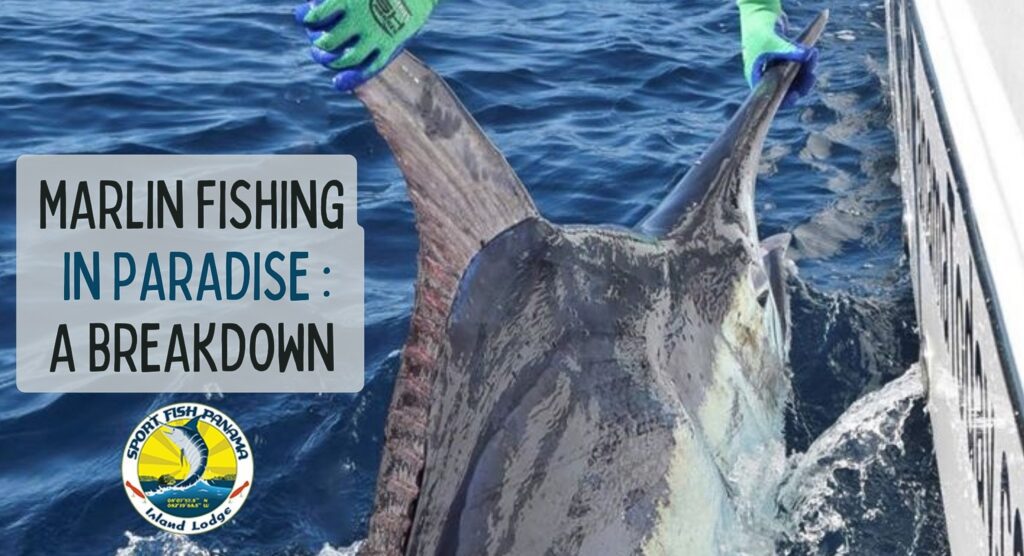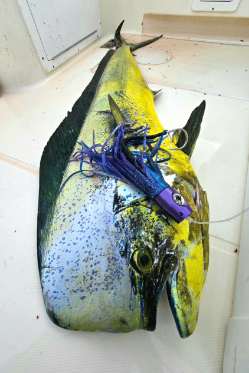Found on high spots and around rocky pinnacles, black marlin are savagely beautiful creatures. Watching a big black pile on a live bait—and witnessing their incredible power when hooked—can change your perspective.
Panama is home to the best and most consistent black marlin fisheries in the northern hemisphere. The presence of big black marlin is central to the mystique of the Hannibal Bank and places like Montuosa Island. Our corner of the world is also home to good numbers of blue marlin. The speed and grace of a blue marlin is unmatched. Their fighting styles, like the ways that we target them, are distinct.
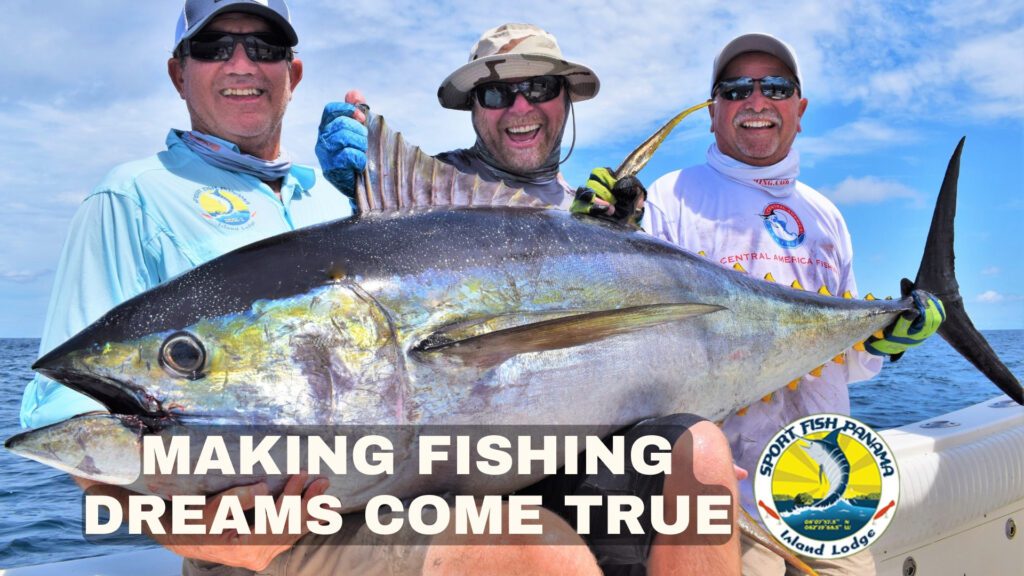
What follows is a breakdown of the Sport Fish Panama Island Lodge’s approach to marlin fishing. It describes when it happens, how it happens, and why catching a black or blue marlin with us is among the most exhilarating experiences that fishing has to offer. A day targeting blacks or blues with Sport Fish Panama Island Lodge is marlin fishing in paradise…
Black Marlin Fishing

While we may catch them in any month of the year, there are two peaks of black marlin fishing in this part of the world. Each peak coincides with aggregations of bonito on Hannibal Bank and other high spots.
July and August and November, December, and into January are the two best, most reliable times to target black marlin in the Gulf of Chiriquí. While each year might unfold a bit differently (we might have great marlin fishing in May or June), these parameters are useful for guests who would like to meet the man in the black suit.
The aggregations of bonito on structure are a great thing for us. First, where there is consistent bait there will likely be black marlin. Second, because the bait holds around fixed structure, we know where to find the bait and the fish.
In places where you target fish on bait in open water, bodies of fish are more difficult to locate. Fish may be in one place today and many miles away the next. When that happens, boats may spend more time running and looking for fish.
An Experience You’ll Remember Forever
When the black marlin fishing is good—and the fishing is located around the Hannibal Bank or other fixed structure— our clients can integrate marlin fishing into their trips. Black marlin fishing here is not a volume fishery—like trolling through schools of yellowfin. You’re looking for one bite… But when that bite comes, it could well be a fish and an experience that you will remember for the rest of your life.
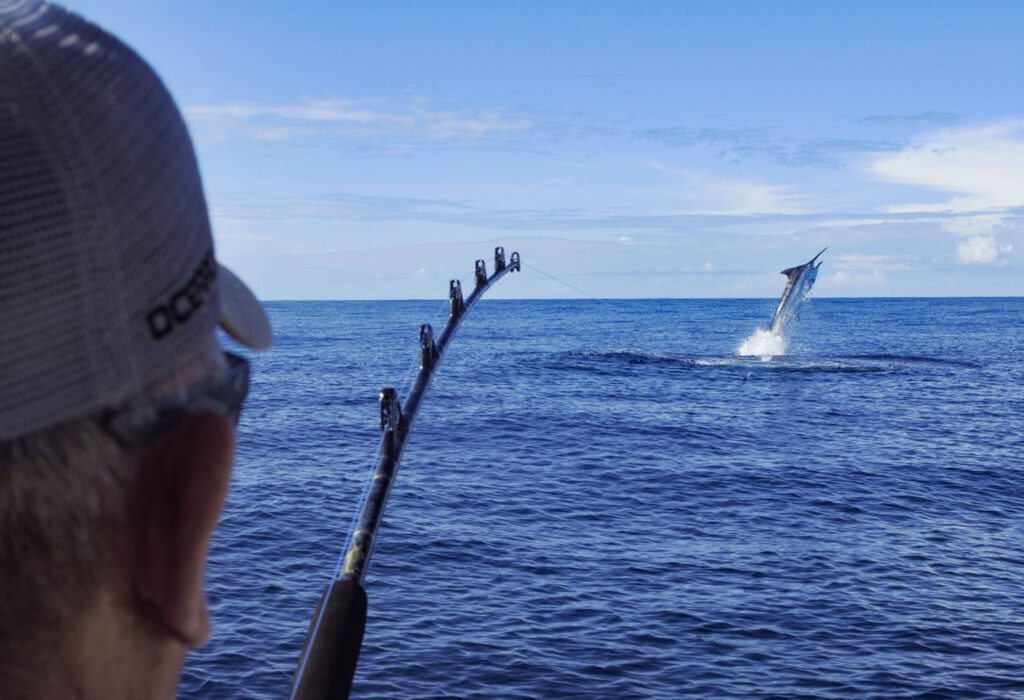
When the black marlin fishing is good, you might catch two, three or even four on a trip. If you’re here when the marlin fishing is wide open, you might find yourself in the running for one of our annual awards—Most Marlin.
We have plenty of clients who fish with us specifically to target black marlin. Experienced marlin fishermen understand the trade potential tradeoff between trying to catch a single or handful of black marlin versus trying to catch lots of tuna.
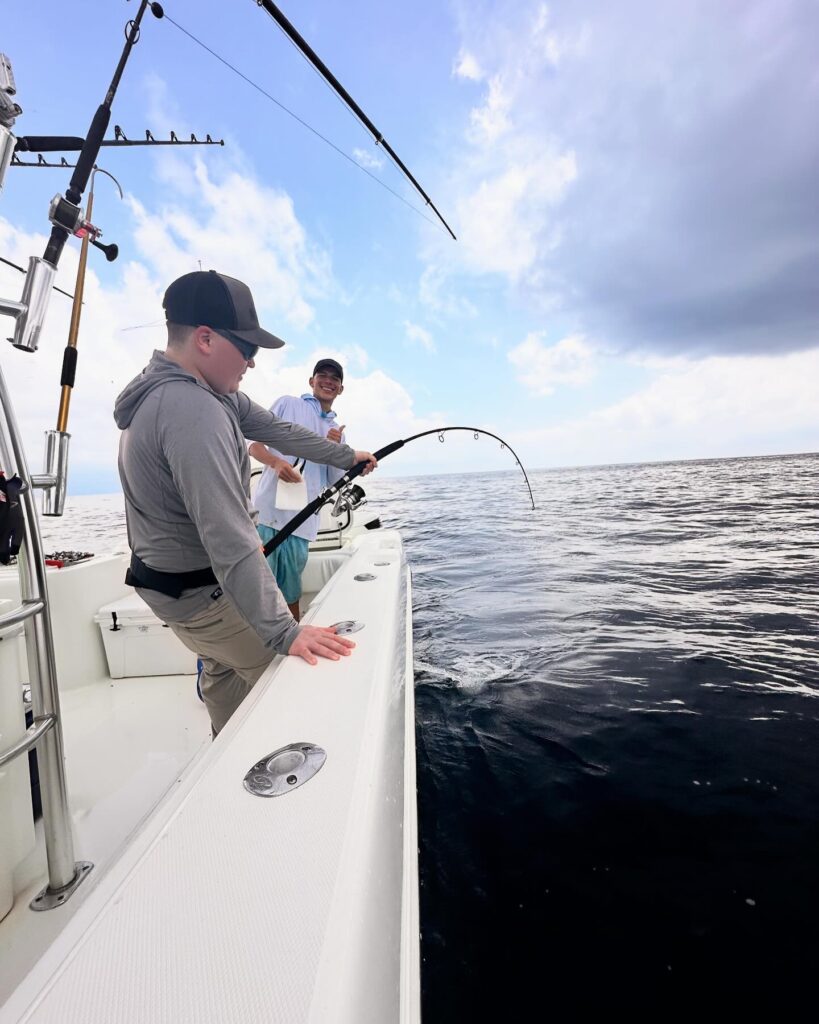
When our boats know that black marlin fishing is good—something that we know by spending time on the water— clients can devote some time to marlin fishing and time to chasing tuna, roosterfish, cubera snapper and other fish. That we keep our fingers on the pulse of the action around us provides plenty of advantages to the people who fish with us.
Our black marlin fishery is largely a live bait affair. Here’s a breakdown of what to expect and how it works.
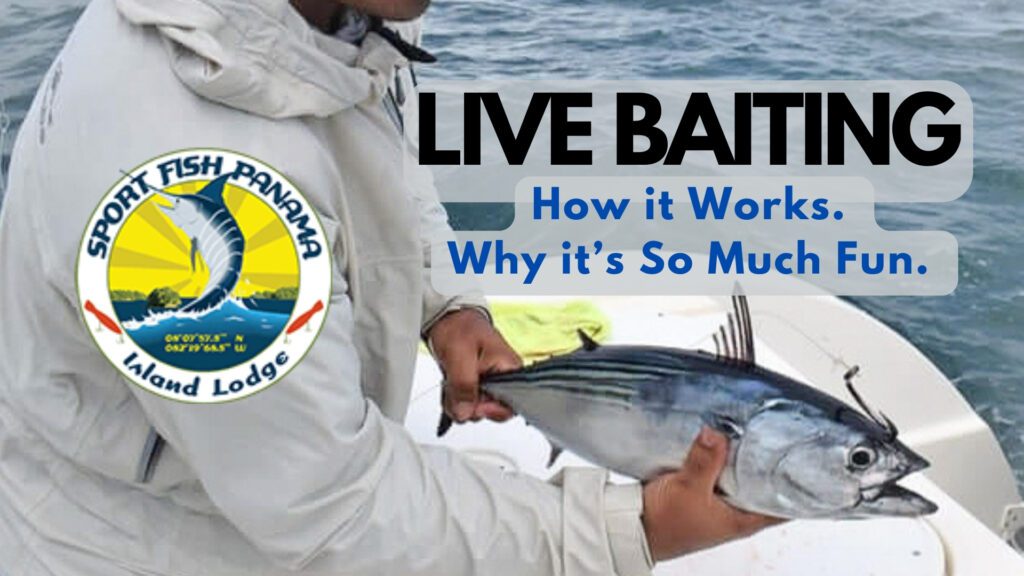
Blue Marlin Fishing
Our peak blue marlin fishing season runs from about the first of November through April. We catch blues outside of this window, but these parameters are the most reliable for the purposes of planning.
We catch most of our blue marlin in one of two ways. Blues are often intermixed with the black marlin around high spots. When there are schools of bonito around consistently, they attract all manner of hungry pelagics.
When you’re live-baiting and a reel goes off, it’s not uncommon for the jumping fish to be a blue marlin instead of a black. For the purposes of hooking and fighting them, the process unfolds in the same manner.
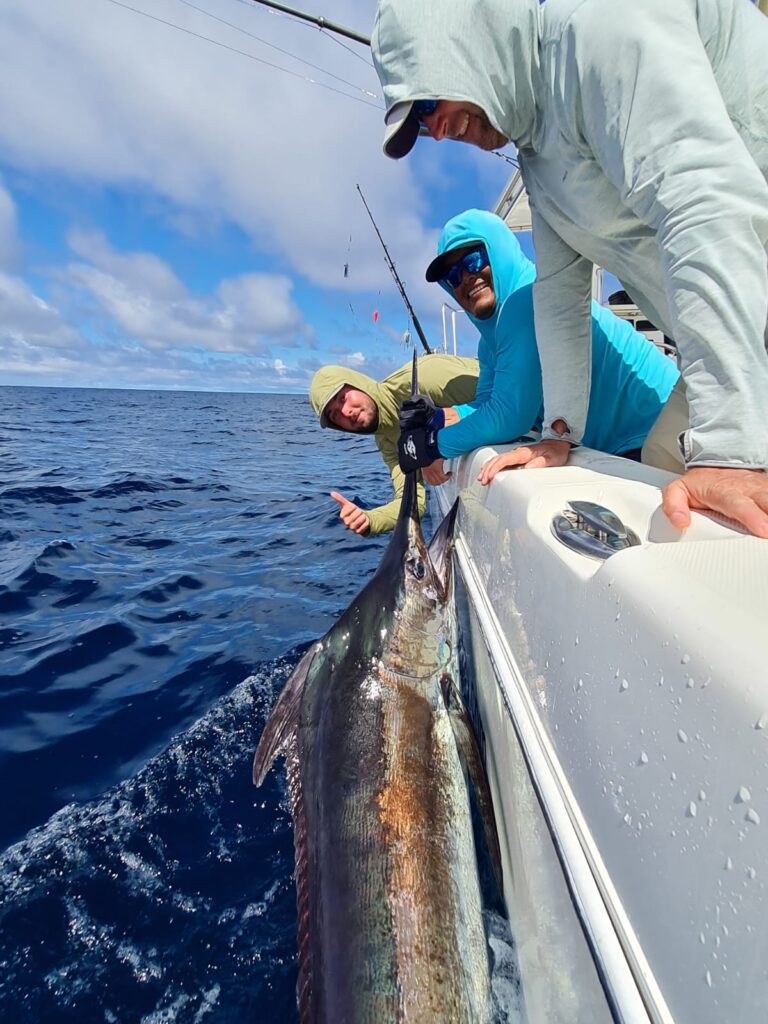
The other way that we target blue marlin is in deeper water. If we find an area in open water that’s full of life—diving birds, bait, or a school of bonito—there may be a blue marlin nearby
If there’s an isolated ball of bonito in open water offshore, this is even more promising. Blue marlin prefer deeper, more open water than do blacks. When we find bonito stacked up offshore, we may circle them with live baits—in much the same manner as we do on high spots for the black marlin.
Trolling Lures
If we’re covering ground in a fishy area of open water, we will troll our Imperium Outfitters marlin lures. If we’re dragging plastics, we’ll troll at around 8 knots.
Trolling lures is not only a great way to catch blue marlin—seeing one crash a lure is an unforgettable sight, but also a way to target dorado and sailfish. When there’s tuna around, we’ll put a cedar plug on the shotgun to pick up a yellowfin while trolling.
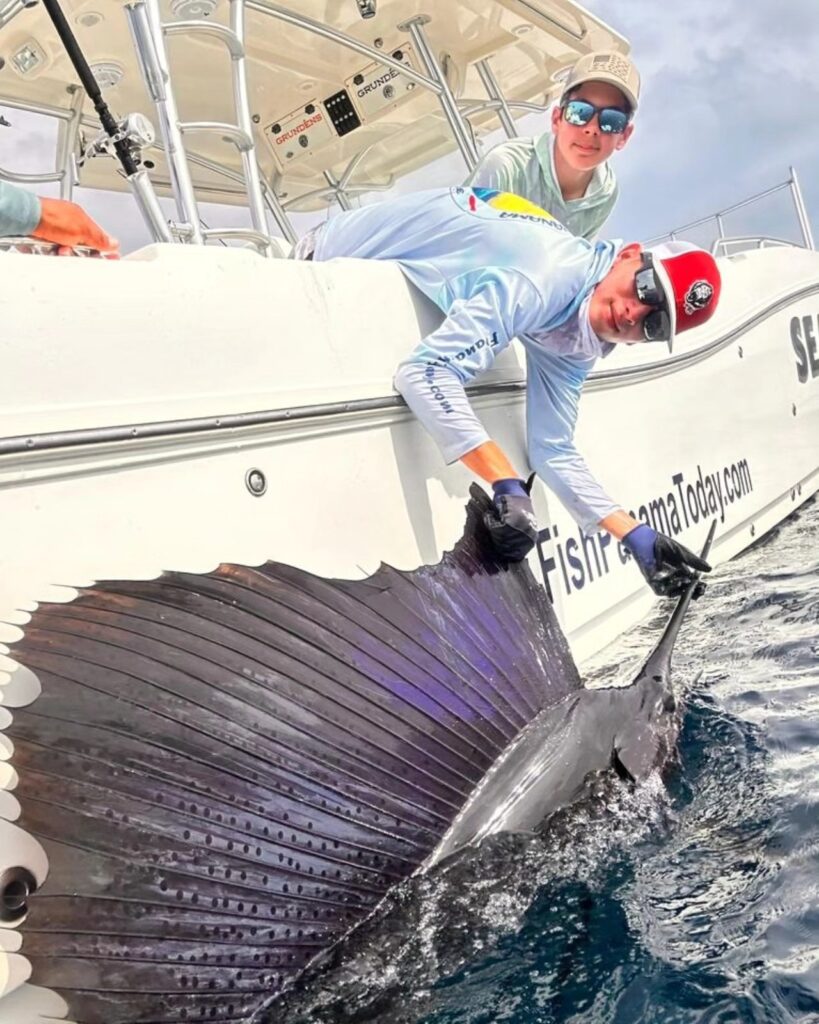
As we cover ground, we’re always ready with pitch baits. We’ll also likely have a fully loaded set of tuna tubes. If we find an area of actively feeding marlin—or get a couple of lure bites in the same place—we can live bait the area to cover it more thoroughly.
Because we fish in area of such wide diversity, our boats are prepared every time we head offshore. The exact approach we will utilize on any given day of marlin fishing is dictated by the conditions we find on the water. No matter what the day brings, we will be ready.
Black and Blue Marlin: How to Tell the Difference
Black and blue marlin are perhaps the two most exciting gamefish in the world. They are the largest and most powerful species of marlin.
In our part of the world, they inhabit the same areas. Sometimes they look very similar—especially until they grow to 350 or 400-pounds. How then can you tell the difference between them?
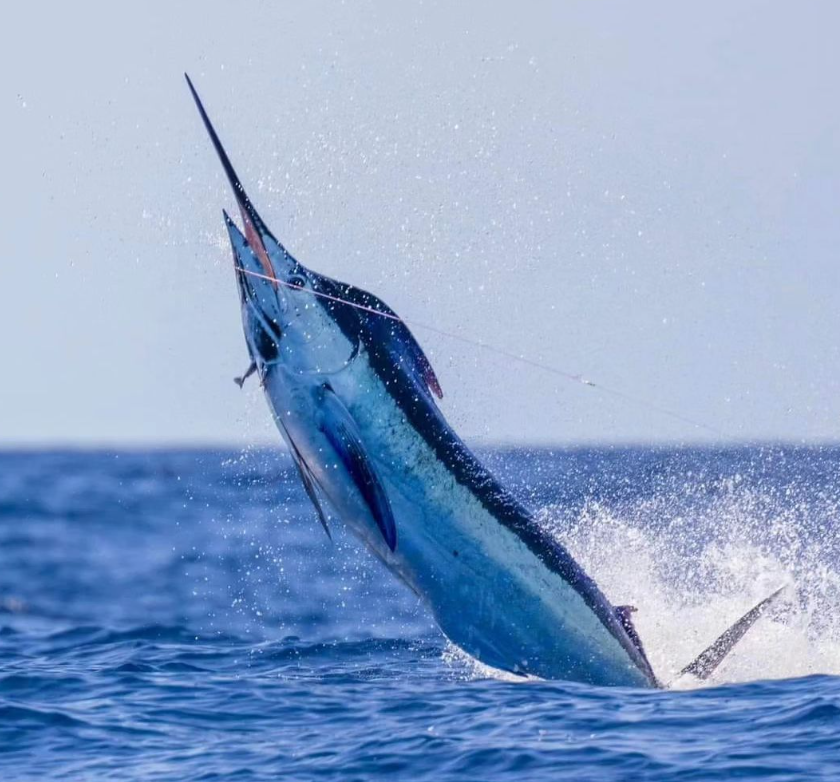
Pectoral fins
An adult black marlin’s pectoral fins are rigid and fixed in place. They cannot fold them down to their body. The prominence of these thick, sickle-shaped fins gives the black marlin an airplane-like appearance when it jumps.
Perhaps the most conclusive way to tell a blue marlin from a black is if the fish jumps with its pectoral fins folded into its body. If it does, the fish is a blue marlin.
Dorsal fins
The dorsal fins of both blue and black marlins have a sharp top (white and striped marlin have rounded dorsal fins). A blue marlin’s dorsal fin tends to be a bit taller and more than that of a black marlin. This difference becomes more noticeable as the fish grow in size.
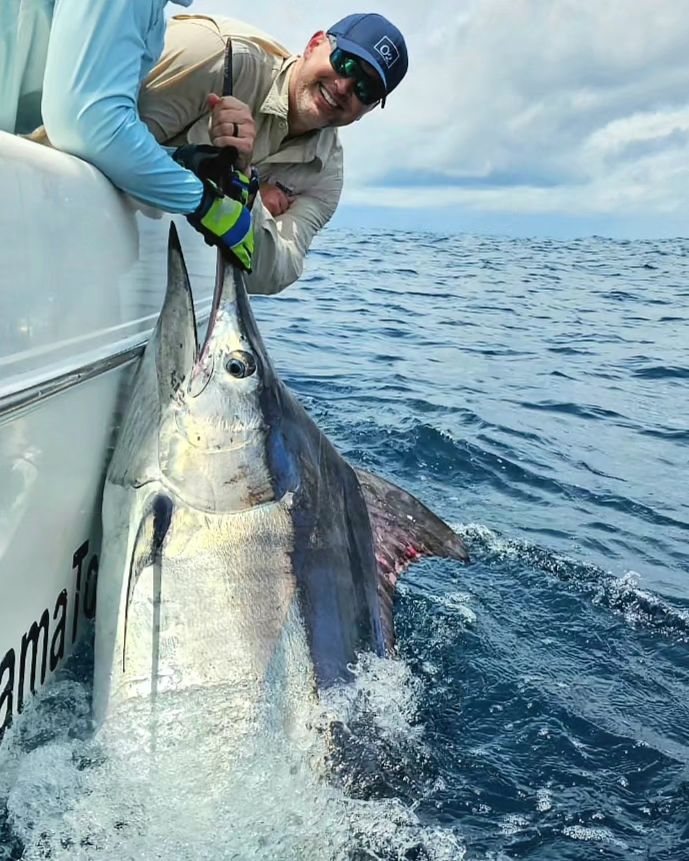
Where a big fish carries its weight
A big black marlin carries its weight in its head. Their wide mouths and powerful cheek muscles are characteristics of the species. A big blue marlin carries its weight in the area of its anal fin.
Coloration
When a black marlin lights up, its pectoral and tail fins may shine a lavender color. It is mesmerizing. When a blue marlin lights it, it will shine a more neon blue. It is radiantly beautiful.
While you can read about the differences between a black and a blue marlin, we’d really love to show you in person… Come see us. Let’s go marlin fishing in paradise.
 (866) 245-1492
(866) 245-1492 

